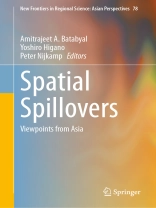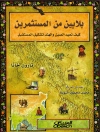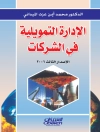This edited book is the first to bring together in one place new theoretical and empirical evidence as well as case studies about spatial spillovers, with a particular focus on spillovers in Asia. In the context of this book, spatial spillovers are locally bounded and territorially rooted interactions between one or more economic agents and their environments. They are salient because they affect regional economic growth and development. Specifically, the individual chapters in this book shed light on the different kinds of spatial spillovers witnessed in Asian regions, particularly those that derive from the acquisition and transfer of knowledge, those that arise from horizontal or vertical industrial interactions, and those that come about because of economic growth. The book departs from the existing literature in three ways. First, the book explicitly recognizes that different kinds of spatial spillovers have dissimilar impacts on the lives and therefore on the welfare of the residents of different regions. Second, the book emphasizes the varied dimensions of the interactions and the ways in which these dimensions influence different societies. Third, this book demonstrates the ways in which an understanding of the preceding two points contributes to our knowledge about the nexuses between spatial spillovers and regional economic growth and development. Because Asia is the fastest growing and the most dynamic continent in the world today, the research delineated in the individual chapters of the book provides practical guidance concerning two salient questions. First, how do we effectively address the economic growth and development challenges stemming from spatial spillovers between one or more regions within Asia? Second, how do we ensure that the policies we design to address these challenges give rise to broad-based and sustainable economic growth and development?
İçerik tablosu
Chapter 1. Introduction to “The Creative Class Revisited: New Analytical Advances”.- Chapter 2. Sustained Economic Growth and Physical Capital Taxation in a Creative Region.- Chapter 3. Do Existing Theories Still Hold for the Creative Labor Market?.- Chapter 4. The Creative Class Jobs Revisited: Towards a Continuous Score of Creativity Based on Natural Language Processing.- Chapter 5. Rethinking the Dimensions of the Creative City: Beyond Urban Amenity.- Chapter 6. The Creative Class at Nineteen: But What About Detroit?.- Chapter 7. Creativity and Remote Work During the COVID-19 Pandemic.- Chapter 8. Creative Class During the COVID-19 Pandemic: The Case of Romanian Performers.- Chapter 9. Advancement and New Spatial Patterns of the Creative Sector in the Old Industrial Structure.- Chapter 10. A New Perspective on Rural Creative Classes in Japan: Creating Shared Value for Sustainable Agriculture and Rural Development.- Chapter 11. Creativity, Knowledge, and Institutions: A European Perspective on Florida’s “The Rise of the Creative Class”.- Chapter 12. The Theory and Analytics of the Creative Class.
Yazar hakkında
Amitrajeet A. Batabyal, Rochester Institute of Technology
Amitrajeet A. Batabyal is a Distinguished Professor, the Arthur J. Gosnell Professor of Economics, and the Interim Head of the Sustainability Department at the Rochester Institute of Technology in Rochester, New York. His research interests include natural resource and environmental economics, regional economics, and he has won many awards for his research.
Yoshiro Higano, University of Tsukuba
Yoshiro Higano is an emeritus professor in the University of Tsukuba, Japan. He conducts research in regional science and he served as a Past President of Regional Science Association International.
Peter Nijkamp, Alexandru Ioan Cuza University, Romania
Peter Nijkamp is affiliated with Alexandru Ioan Cuza University in Romania. He has published broadly in many areas of regional science, economics, and transportation science. He is a winner of the Spinoza Prize in the Netherlands.












